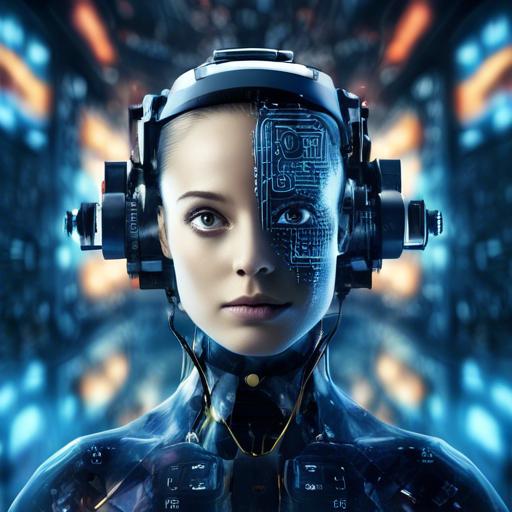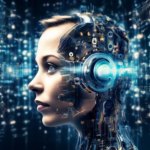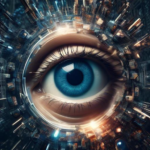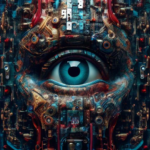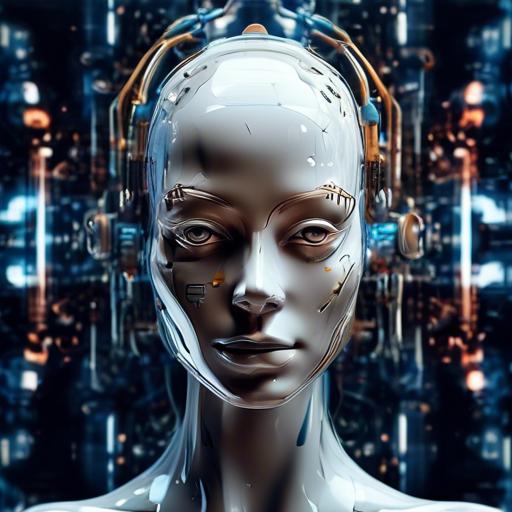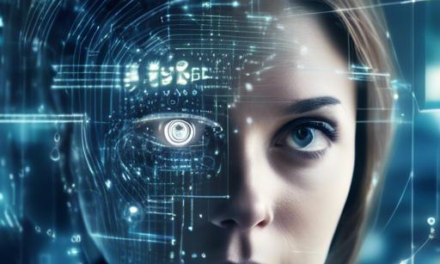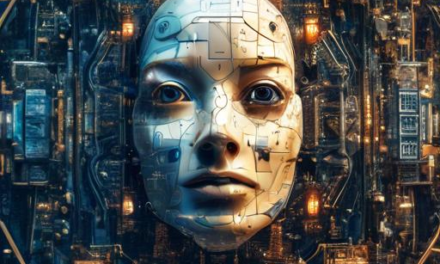In an era where the digital and the creative realms merge like never before, the specter of unprotected intellectual property rights haunts every artist, writer, and innovator. There’s a silent guardian stepping out of the shadows, weaving lines of code into sentinels that shield creative minds. This guardian is none other than Artificial Intelligence (AI), the very enigma that once seemed destined to blur the lines of originality now stands as a bulwark for creative rights. As we delve into the fascinating symbiosis of AI and creativity, we’ll unearth how this cutting-edge technology is not merely a tool but a vigilant ally in the ceaseless quest to protect and honor the sanctity of artistic endeavors. From etching digital watermarks to monitoring the vast ocean of the internet with unparalleled acuity, AI is here to turn the tide in favor of creators everywhere. So, let’s journey together into this evolving landscape, where innovation meets guardianship, and discover the transformative role of AI in safeguarding the treasures of human imagination.
Table of Contents
- Emergence of AI in the Creative Landscape
- Safeguarding Originality: How AI Detects Plagiarism
- Empowering Artists: AI as the Digital Guardian of Creative Works
- Navigating Ethical Waters: Balancing AI and Intellectual Property
- Harnessing AI to Track and Trace Copyright Infringements
- Smart Contracts and Blockchain: Revolutionizing Creative Rights Protection
- AI and Fair Use: Striking the Perfect Balance
- Future-Proofing Creativity: AI and the Evolution of Copyright Laws
- Closing Remarks
Emergence of AI in the Creative Landscape
Artificial Intelligence (AI) is increasingly becoming a pivotal force in the realm of creativity. From generating art and music to assisting in scriptwriting and design, AI’s footprint is expanding in the creative sectors. But along with these advancements comes the significant challenge of safeguarding creative rights. The implementation of AI brings new paradigms and questions about ownership, originality, and authenticity.
- AI-Generated Content: As AI-powered tools produce content that rivals human creativity, the line between human-made and machine-generated works blurs. This raises crucial questions about who holds the rights to these creations. Should it be the developer, the user, or perhaps the AI itself?
- Copyright Infringement Detection: AI can serve as a guardian of intellectual property by identifying instances of plagiarism and unauthorized use of copyrighted material. Advanced algorithms can scan vast amounts of digital data to detect potential infringements, offering creators a layer of protection previously unattainable.
- Smart Contracts and Blockchain: Integrating AI with blockchain technology enables the creation of smart contracts that automatically enforce agreements related to the use and distribution of creative works. This can streamline the process of licensing and ensure that creators are fairly compensated.
Consider the following examples illustrating AI’s role in different creative domains:
| Domain | AI Application | Benefit |
|---|---|---|
| Music | AI-generated compositions | New musical pieces and collaborative tools |
| Visual Arts | AI-powered image creation | Enhanced creative processes and new aesthetics |
| Literature | AI-assisted writing | Inspiration and augmentation for authors |
In the publishing world, these advancements are already taking shape. AI-driven platforms are helping writers perfect their manuscripts, offering insights that might take a human editor hours to produce. Similarly, AI is being employed to protect authors’ rights by identifying potential infringements across digital copies and online platforms. While the landscape is dynamic and rapidly evolving, the integration of AI adds layers of complexity and opportunity in securing creative rights.
For artists and innovators, this not only means a new realm of possibilities but also the reassurance that their work can be shielded from unauthorized use. As AI continues to evolve, its capability to protect, authenticate, and attribute creative content will undoubtedly become more refined, offering a safer and more creatively rich environment.
Safeguarding Originality: How AI Detects Plagiarism
In the digital age, the sanctity of creative work is more vulnerable than ever. This is where cutting-edge AI technology steps in as the unsung hero, meticulously scanning vast volumes of data to ensure every piece of content is truly unique. **AI-powered plagiarism detectors** don’t just rely on traditional keyword or phrase matching. They utilize deep learning algorithms and natural language processing (NLP) to understand the context and intricacies of the text, identifying subtle nuances that older systems might miss.
One major advantage of using AI for plagiarism detection is its ability to cross-check against an extensive and ever-growing database. This includes academic papers, news articles, blog posts, and even social media content. By doing this, AI systems can uncover:
- Direct copies of text
- Paraphrased content
- Improper attributions
The precision of AI in identifying these various forms of intellectual theft is unparalleled. **Academic institutions, publishing houses, and even individual content creators** can now leverage AI tools to uphold the integrity of their work. Not only does this protect the original creators, but it also promotes a more honest and ethical environment for creativity to thrive.
Beyond mere detection, AI tools can also educate users on the importance of originality by providing detailed reports and suggesting improvements. For instance, a typical report might highlight:
| Section | Issue Detected | Recommendation |
|---|---|---|
| Introduction | High similarity to existing source | Consider rephrasing |
| Conclusion | Needs additional citations | Include proper references |
This way, not only does AI act as a watchdog but also as a mentor, guiding creators toward more authentic expression. In a world where the value of originality cannot be overstated, it’s reassuring to know that AI has our backs, ensuring that every creative endeavor is safeguarded.
Empowering Artists: AI as the Digital Guardian of Creative Works
In the ever-evolving digital landscape, the fusion of artistic creativity and AI innovation is crafting a protective shield around the intellectual property of artists. With a growing sea of content and easy access to digital works, AI has emerged as a steadfast guardian, ensuring that the hard work and originality of creators remain secure and appreciated.
One significant way AI is empowering artists is through **automated copyright protection**. By scanning the internet, AI algorithms can identify unauthorized uses of an artist’s work in real-time. This not only deters potential infringers but also reduces the burden on artists to constantly monitor for infringements themselves. Imagine the relief of an artist knowing their digital creations are under constant surveillance by an unfailing digital custodian.
Furthermore, AI-driven platforms offer **smart contracts** utilizing blockchain technology that can automatically enforce licensing agreements. Artists can detail specific usage rights and terms, ensuring their work is used appropriately. This new wave of technology allows artists to focus more on their craft, knowing their interests are legally safeguarded without exhaustive paperwork.
AI tools can also provide detailed **reporting and analytics** that give artists insights into where and how their work is being used. This data can empower artists to negotiate fair compensations and collaborations, armed with concrete evidence of their work’s reach and impact. Such metrics are invaluable in an age where visibility and influence can translate directly into financial viability.
- Automated Copyright Protection – Real-time infringement detection.
- Smart Contracts – Tailored licensing agreements backed by blockchain.
- Detailed Analytics – Comprehensive usage reports.
| Feature | Benefit |
|---|---|
| Automated Copyright Protection | Reduced need for manual monitoring. |
| Smart Contracts | Streamlined licensing processes. |
| Detailed Analytics | Enhanced negotiation leverage. |
Navigating Ethical Waters: Balancing AI and Intellectual Property
As artificial intelligence (AI) continues to integrate into the world of creative arts, it presents both intriguing possibilities and ethical dilemmas. One of the primary concerns is how AI can aid in safeguarding intellectual property (IP) without infringing on the rights of original creators. To achieve this balance, it’s crucial to explore effective strategies and question the role of AI in this domain.
AI offers several tools to vigilantly protect creative works. Algorithms can now detect instances of copyright infringement with remarkable accuracy, scanning vast amounts of online content to identify unauthorized use of images, music, literature, and videos. Some of these key features include:
- Content ID systems: Platforms like YouTube employ sophisticated AI to match uploaded content against a database of copyrighted material, which helps in swiftly identifying and addressing IP violations.
- Plagiarism detection: Text-based AI tools can scan written works to find copied or closely paraphrased content, assisting authors and educators in maintaining academic integrity.
- Blockchain for provenance: Blockchain technology, when combined with AI, ensures a transparent and immutable record of ownership, providing a robust solution for verifying the authenticity of digital art and other creations.
While these technologies provide significant benefits, they also pose challenges. For instance, overly rigorous application of AI can sometimes mistakenly target legitimate uses under fair use or creative commons. The balance between protecting IP and allowing creative freedom is delicate, necessitating human oversight to mitigate unintended consequences. Understanding this balance requires insight into how different stakeholders are affected, and ensuring that AI systems are trained with diverse, representative datasets.
| AI Tool | Use Case | Benefit |
|---|---|---|
| Content ID Systems | Detecting Infringement | Swift Identification |
| Plagiarism Detection | Academic Writing | Maintains Integrity |
| Blockchain + AI | Digital Art | Verifying Authenticity |
Navigating these ethical waters requires collaboration between technologists, artists, legal experts, and ethicists. By fostering an open dialogue and sharing best practices, we can ensure that AI serves as a partner in protecting creative rights rather than as a peril. The goal is to build a future where technology amplifies the value of human creativity, respecting and honoring the intellectual property of creators across the globe.
Harnessing AI to Track and Trace Copyright Infringements
In today’s digital landscape, **AI-powered tools** are revolutionizing how copyright infringements are tracked and traced. These advanced algorithms sift through vast quantities of data to identify unauthorized use of creative works, enabling artists, writers, and musicians to protect their intellectual property with unprecedented precision.
AI systems utilize sophisticated **machine learning** models and image recognition technologies to compare new content against existing databases. By recognizing patterns and similarities, they can swiftly flag potential infringements. This process is not only faster but also more accurate than traditional methods, which often require manual intervention.
Creators benefit significantly from these enhancements:
- Efficiency: Automated detection streamlines the monitoring process, saving valuable time and resources.
- Accuracy: Reduced errors in identifying infringements lead to stronger cases for legal action.
- Scalability: AI can handle large datasets, making it ideal for popular content that gets widely circulated.
Furthermore, AI can provide valuable **analytical insights**. By compiling data on where and how frequently infringements occur, creators can better understand the distribution and popularity of their content across different platforms. This information can inform strategic decisions regarding licensing and distribution.
Here’s a quick comparison of traditional methods versus AI-driven approaches:
| Aspect | Traditional Method | AI-Driven Approach |
|---|---|---|
| Speed | Slow | Fast |
| Accuracy | Moderate | High |
| Scalability | Limited | Extensive |
| Cost | High | Varied |
By leveraging **AI technologies**, creators can not only safeguard their rights more effectively but also devote more of their time to what they do best—creating innovative and inspiring works. Empowered with these tools, the creative community can foster a more fair and equitable digital ecosystem.
Smart Contracts and Blockchain: Revolutionizing Creative Rights Protection
In recent years, the integration of **smart contracts** into blockchain technology has emerged as a game-changer in the realm of creative rights protection. These innovative tools offer content creators—which range from writers and musicians to digital artists and filmmakers—a reliable and transparent method for safeguarding and managing their intellectual property.
Smart contracts are self-executing contracts with the terms of the agreement directly written into code. This means that once certain conditions are met, actions are performed automatically, without the need for intermediary involvement. By utilizing blockchain’s immutable ledgers, smart contracts ensure that all agreements and transactions are transparent and irreversible. This facilitation greatly reduces instances of plagiarism, unauthorized reproduction, and other forms of intellectual property infringement.
- Transparency: All transactions recorded on the blockchain are publicly verifiable, ensuring that the origin and ownership of the creative work are clear.
- Security: The decentralized nature of blockchain protects content from being tampered with or altered without permission.
- Efficient Royalty Distribution: Royalties and payments can be automatically distributed to the rightful owners immediately upon the occurrence of predefined events, such as a sale or usage of the content.
To illustrate the impact, let’s consider an independent musician looking to release a new album. By incorporating smart contracts, the musician can set predetermined conditions for each sale, streaming, or licensing activity. Upon each transaction, funds are immediately and automatically distributed to the artist, producer, and other stakeholders as per their predefined shares. This not only ensures rightful compensation but also removes the time-consuming process of manual royalty tracking.
| Feature | Description |
|---|---|
| Transparency | All transactions are recorded and visible to the public, offering a clear and indisputable proof of ownership. |
| Automation | Predefined actions are executed automatically, streamlining payment processes and rights enforcement. |
| Security | Immutable records prevent unauthorized changes and ensure the protection of creative works. |
By leveraging smart contracts within blockchain, we are harnessing the power of technology to further empower creators and provide an infallible foundation for their intellectual properties. This shift not only promises enhanced protection but also fosters a more rewarding and streamlined experience for content creators of all types.
AI and Fair Use: Striking the Perfect Balance
Artificial Intelligence is navigating the intricate landscape of fair use, offering a delicate balance that respects the integrity of creative rights while fostering innovation and accessibility. AI’s capabilities in identifying copyright-protected content and generating metadata have introduced a new layer of protection for creators. However, the journey toward achieving the perfect equilibrium is not without its challenges.
Key Benefits:
- Content Identification: AI can quickly scan and recognize copyrighted materials, ensuring creators get the credit they deserve.
- Automated Licensing: Streamlines the process of obtaining permission, making it easier for users to employ content legally.
- Enhanced Accuracy: Minimizes the risk of human error in identifying and labeling creative works.
However, the enforcement of fair use isn’t solely about technology. It’s also about understanding the nuances of the law. AI can assist in interpreting these nuances but it must be programmed with a comprehensive understanding of existing copyright laws and potential future legal decisions to remain effective. The intersection of AI and fair use must always consider the human element to ensure fairness and equity.
AI’s role isn’t just about protecting existing works—it’s also a partner in creativity. Here are some ways AI fosters new creative expressions while respecting rights:
| AI Application | Benefit |
|---|---|
| Content Analysis | Discovers trends and insights, inspiring new creative directions. |
| Automated Editing | Assists creators in refining and enhancing their work. |
| Idea Generation | Provides a starting point for new projects based on existing data. |
Maintaining the balance between innovation and protection is critical. AI must evolve alongside our understanding of intellectual property, ensuring that while new creations emerge, the original creators are honored and rewarded. This symbiotic relationship between man and machine promises a future where creativity can flourish under the careful guardianship of intelligent systems.
Future-Proofing Creativity: AI and the Evolution of Copyright Laws
In today’s rapidly changing digital landscape, the integration of AI into our creative processes has become not just beneficial, but essential. As AI continues to evolve, so too must our understanding and implementation of copyright laws to ensure that creativity is both encouraged and protected. The need for adaptable copyright laws to address AI-generated content is one of the most pressing challenges of our time.
AI has the potential to **revolutionize the creative industry** by generating original works such as music, literature, and art. However, this raises the question: who holds the rights to these AI-created works? Current copyright laws are predominantly centered around human creators, leaving a gray area when it comes to AI. Hence, it is imperative that legislation evolves to clearly define and protect the rights of AI-generated content while fostering innovation.
To address this, here are several key areas that need consideration:
- Ownership: Establishing whether the AI developer, user, or another party holds the intellectual property rights.
- Attribution: Ensuring that AI creations are accurately credited to both the AI system and its human overseer.
- Fair use policies: Adapting existing laws to allow for reasonable use of AI-generated works without stifling creativity.
The table below illustrates some potential approaches to these issues:
| Key Area | Potential Approach |
|---|---|
| Ownership | Define clear rights for developers and users |
| Attribution | Implement dual-credit systems |
| Fair Use | Update laws to include AI-specific clauses |
Addressing these aspects will not only **protect creative rights** but also encourage the responsible use of AI in creative endeavors. By aligning copyright laws with technological advancements, we can create a supportive environment for innovation that safeguards the interests of all stakeholders.
Closing Remarks
the integration of AI in protecting creative rights is an essential step towards safeguarding the intellectual property of artists and creators. With AI technologies constantly evolving, we have the power to enforce copyright protections more efficiently and effectively than ever before. Let’s embrace the possibilities that AI offers in preserving and championing creativity in all its forms. Together, we can ensure a bright future where artists can thrive and their rights are honored and respected. Let’s continue to harness the power of AI to bring about positive change in the world of creative expression.

